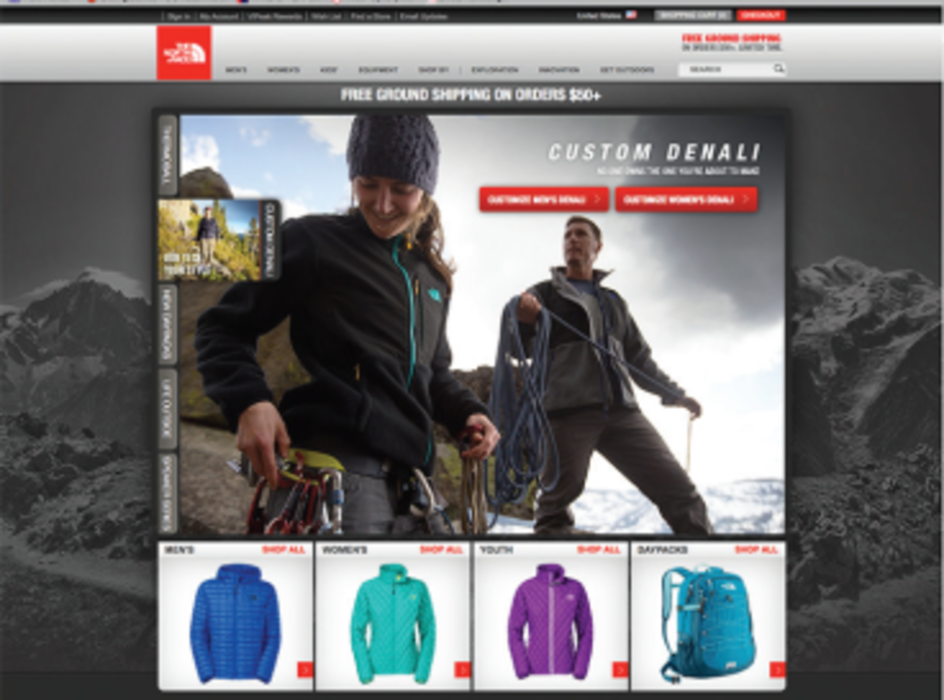Online shoppers don’t always explicitly state their needs. If they don’t like a brand’s e-commerce website, they X out, usually without saying why. In the past, marketers would be left reeling, making hopeful but ultimately blind changes to their online creative to drive conversions. Not today: Brands can now evaluate the implicit actions from remote customers and use the information to improve the efficacy of the online shopping experience.
Precise pinpointing
Since the launch of its e-commerce website, TheNorthFace.com, outdoor sports gear and apparel company The North Face has used analytics with Coremetrics and Google Analytics to track sales order performance, detect online problems, and better predict results. In 2012 the brand started using a SaaS solution from ClickTale to detect in real time what consumers are clicking on while visiting its website, and identify problems consumers may be having with checkout or shopping pages, such as not being able to get to the next page or find the checkout button. Cal Bouchard, e-commerce director at The North Face, says being able to pinpoint these problems in real-time allows The North Face to redesign its page layout and button design to make it easier for shoppers to find what they’re looking for. Bouchard adds that these “little fixes” has helped The North Face increase conversions by 67% since the website’s launch in 2008.
The same year The North Face implemented ClickTale, it also started using marketing and website optimization solution provider Monetate to geo-target content and recommend products based on shoppers’ location and buying and browsing habits. Bouchard says having all this data allows The North Face to determine in real-time what homepage a consumer sees, or what product the brand recommends while the consumer is on the website.
“This service helps us predict which shoppers might be interested in winter boots, such as consumers in Boston after a big snow storm, or our marathon training T-shirts for consumers living in Chicago browsing our running gear,” she explains.
While The North Face found value in applying customer insight to boost conversions and upsells, online bike retailer BikeBerry uses its analysis to send the right discounts to the right customer. For instance, why should it send a 20 to 40% coupon to someone willing to make a purchase for only 5% off? The company uses a customer profiling solution from Retention Science to combine purchase history information with email and e-commerce data, such as open and click-through rates, browsing patterns, and time spent on the BikeBerry website.
By using this technology BikeBerry segments its audience by likelihood to buy at a certain discount, and offers each segment specific discounts. For example, BikeBerry CEO Jack Lin says his company used to offer a blanket 50% discount on all bicycle parts on Black Friday; however, the brand now identifies the customers who will by the same part for only 10% off. BikeBerry is also able to make product recommendations to its customers. If a customer bought an engine kit two months ago, BikeBerry can send that customer an email reminding them that it’s time to purchase additional components, Lin says.
BikeBerry has been using the Profiling Engine for more than a year and has seen strong results. In February 2012 existing customers accounted for 22% of sales. Just one year later, existing customers accounted for 41%.








